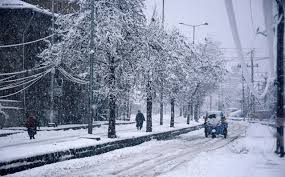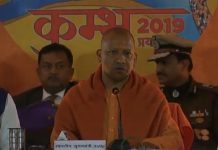After the first four months of 2024 saw a record-breaking influx of over a million tourists, the gravy train continues for Kashmir’s tourism sector. While the rest of India is scorched by a heat wave, the Valley, thanks to rare June snowfall, is drawing tourists in hordes. A report by Riyaz Wani

On June 21, which is the middle of summer, Peer Ki Gali, connecting Shopian district of south Kashmir with the twin districts of Poonch and Rajouri, received four inches of fresh snowfall, disrupting normal traffic movement. Similarly, the upper reaches of Zojila Pass on the Srinagar-Ladakh highway also experienced fresh snowfall. This brought the already moderate temperature in the Kashmir Valley further down at a time when the rest of the country is reeling under a scorching heat wave. The Valley, as a result, has become a go-to place for the tourists from the mainland seeking respite. The influx of tourists has reached a point where houseboats on Dal Lake must be reserved months in advance, reflecting the high demand for accommodation.
The first four months of 2024 alone saw over a million tourists flocking to Kashmir, breaking winter tourism records, according to official numbers. The number of foreign tourists has seen a 61 percent increase compared to the same period last year. Srinagar International Airport data has indicated a significant rise in passenger traffic, with an average of over 18,000 visitors per day. The increased demand is reflected in the airport’s operation, with the number of flights rising from 70 to 94.
Over some days in the first week of June, several higher reaches of Kashmir, including Affarwat in Gulmarg, Razdan Top, Zojilla, Sadhna Top, and Sinthan Top, experienced unseasonal snowfall. This was accompanied by rain in the plains, leading to a significant drop in temperatures across the region. In Srinagar, temperature declined to 21.6°C, and at the tourist spots such as Pahalgam, Kokernag, and Gulmarg, the temperature dropped to 20.4°C, 22.7°C and 11.2°C respectively. A consequent pleasant weather in summer is drawing tourists in droves.
The region attracted over 21.1 million tourists in 2023, propelling the local economy to new heights, according to the state Tourism Department. This surge has significantly helped the tourism sector recover from the setbacks experienced after the abrogation of Article 370 on August 5, 2019, and the subsequent restrictions imposed during the COVID-19 pandemic in 2020.
In recent years, the J&K administration has made efforts to bring more tourists to the region. Once the successive Covid lockdowns were over, the administration launched promotional efforts within and outside the country to attract tourists back to the Valley. The government has added more tourist places, earmarking another 75 tourist destinations for tourism. The homestay facilities have attracted tourists to far-off areas once considered a no-go zone due to security concerns.The facility was introduced by the government in 2022, and it has boosted border and rural tourism.
Authorities have recently opened the Pir Panjal region from the Yusmarg end in South Kashmir for trekking. Similarly, the Athwatoo area in Bandipora, located in the Shamsbari range—once notorious for infiltration routes—has become accessible to tourists. This shift has led high-end tourists from the rest of the country to explore beyond traditional spots like Gulmarg, Pahalgam, and Sonamarg, opting instead for trekking and visiting border areas. Gurez is one such area. Hitherto out of bounds for tourists due to militancy, Gurez is witnessing tourist inflow.
“The situation is now so normal such that we no longer need to promote tourism in Kashmir extensively,” said Nasir Shah, chairman of the Indian Association of Tour Operators, J&K Chapter. “Tourists are now coming on their own.”
Shah added that around 100 tourists visit Gurez each day. However, the region’s growing popularity has introduced its own challenges. There are fewer hotels in Gurez and the place needs more infrastructure to accommodate the increasing inflow.
One positive development for the Valley is that the footfall of foreign tourists has increased by nearly 300 percent as a total of 55000 tourists from outside the country have visited the union territory. Last year, the government said that it was exploring the entertainment industry to promote Jammu and Kashmir tourism worldwide.
Kashmir Valley is also benefiting from the central government’s ‘Cool Summers of India’ campaign.
Under the campaign, the centre has picked over 50 destinations in consultation with respective state governments and Union territories, and efforts are on to actively promote them as tourist attractions. And Kashmir Valley is one of the biggest beneficiaries of this campaign.













